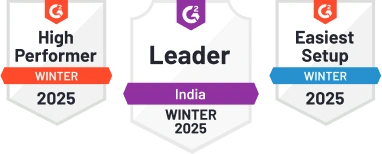Key Responsibility Areas (KRAs) & Key Performance Indicators (KPIs) for Mechanical Engineer Oil And Gas
1. Design and Engineering
KRA: Responsible for designing and engineering mechanical systems for oil and gas projects.
Short Description: Design and engineer mechanical systems for oil and gas applications.
- Number of successful design implementations
- Adherence to project timelines
- Accuracy of technical drawings
- Efficiency in material selection
2. Equipment Inspection and Maintenance
KRA: Ensure proper inspection and maintenance of mechanical equipment in the oil and gas industry.
Short Description: Inspect and maintain mechanical equipment for optimal performance.
- Downtime reduction due to maintenance activities
- Equipment failure rate reduction
- Compliance with safety standards during inspections
- Cost-effectiveness of maintenance procedures
3. Project Management
KRA: Oversee and manage mechanical projects within the oil and gas sector.
Short Description: Manage mechanical projects efficiently from inception to completion.
- Project completion within budget
- Client satisfaction ratings on project delivery
- Adherence to project timelines
- Effective resource utilization
4. Quality Assurance and Control
KRA: Implement quality assurance and control measures for mechanical systems in oil and gas projects.
Short Description: Ensure quality standards are met in mechanical systems.
- Number of quality inspections conducted
- Percentage of defects identified and rectified
- Compliance with industry quality standards
- Feedback from quality audits
5. Risk Assessment and Mitigation
KRA: Identify potential risks in mechanical operations and implement mitigation strategies.
Short Description: Assess and mitigate risks associated with mechanical operations.
- Number of identified risks mitigated
- Incident rate reduction due to risk mitigation measures
- Effectiveness of risk management strategies
- Adherence to safety protocols
6. Research and Development
KRA: Engage in research and development activities to improve mechanical systems in the oil and gas industry.
Short Description: Drive innovation through research and development initiatives.
- Number of new technologies implemented
- Percentage increase in system efficiency due to R&D projects
- Patents filed for innovative solutions
- Feedback from R&D team on project outcomes
7. Regulatory Compliance
KRA: Ensure adherence to regulatory requirements and standards in mechanical engineering practices for oil and gas projects.
Short Description: Comply with industry regulations and standards.
- Audit findings related to regulatory compliance
- Number of regulatory violations reported
- Completion of mandatory training programs on regulations
- Feedback from regulatory bodies on compliance status
8. Cost Management
KRA: Manage project costs effectively while maintaining quality standards in mechanical engineering projects.
Short Description: Optimize project costs without compromising quality.
- Cost variance analysis for projects
- Percentage of cost savings achieved
- Cost per unit reduction in project implementation
- Budget adherence for mechanical components
9. Team Leadership and Development
KRA: Lead and develop a high-performing team of mechanical engineers for oil and gas projects.
Short Description: Foster team growth and collaboration for project success.
- Team productivity metrics
- Employee satisfaction and retention rates
- Training hours invested in team development
- Feedback from team members on leadership effectiveness
10. Environmental Sustainability
KRA: Implement environmentally sustainable practices in mechanical engineering operations within the oil and gas industry.
Short Description: Promote eco-friendly solutions in mechanical engineering projects.
- Reduction in carbon footprint of mechanical operations
- Percentage increase in use of renewable energy sources
- Environmental impact assessments for projects
- Compliance with green certifications and standards
Real-Time Example of KRA & KPI
Mechanical Engineer Oil And Gas Example:
KRA: Implementing innovative cooling systems to improve energy efficiency in offshore oil rigs.
- KPI 1: Reduction in energy consumption by 20% within 6 months.
- KPI 2: Cost savings of $50,000 annually from energy-efficient systems.
- KPI 3: Positive feedback from rig operators on improved comfort levels.
- KPI 4: Compliance with environmental regulations on emissions reduction.
This example showcases how focusing on specific KPIs led to tangible improvements in energy efficiency, cost savings, and environmental compliance.
Key Takeaways
- KRA defines what needs to be done, whereas KPI measures how well it is done.
- KPIs should always be SMART (Specific, Measurable, Achievable, Relevant, Time-bound).
- Regular tracking and adjustments ensure success in Mechanical Engineer Oil And Gas.







